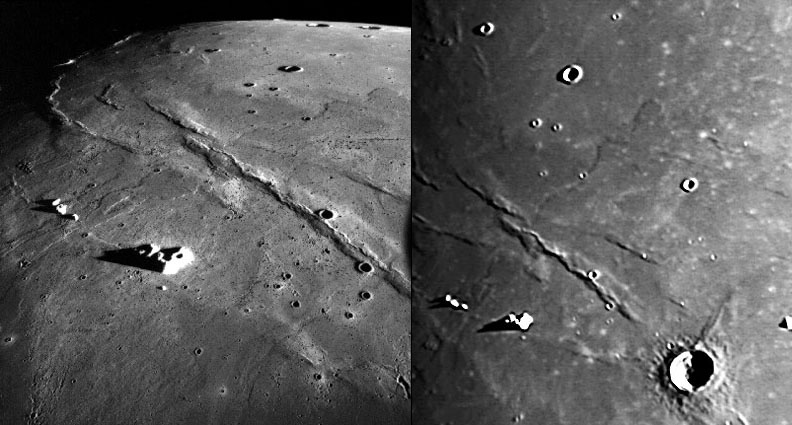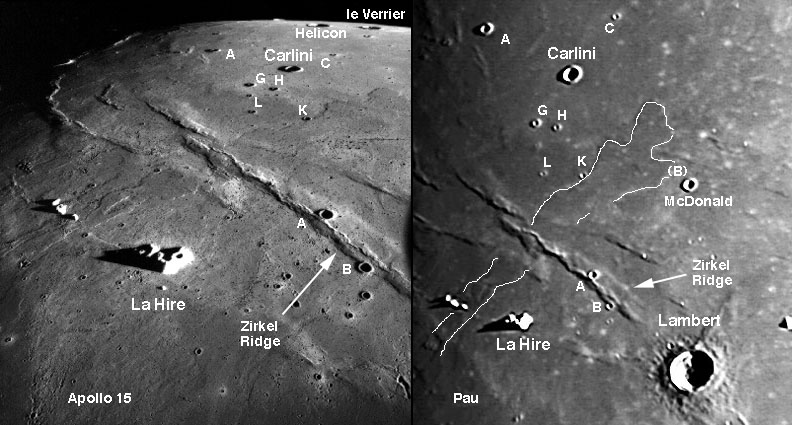Difference between revisions of "July 19, 2004"
| Line 14: | Line 14: | ||
<table width="100%" border="0" cellpadding="8"> | <table width="100%" border="0" cellpadding="8"> | ||
<tr> | <tr> | ||
| − | <td><div align="center" span class="main_sm"><p>Image Credit: <span class="one">[http://www.lpi.usra.edu/expmoon/Apollo15/A15_Photography_metric.html Apollo 15 - 1555] (L) and [mailto:kcpaulhk@yahoo.com.hk KC Pau] (R) </p></div></td> | + | <td><div align="center" span class="main_sm"><p>Image Credit: <span class="one">[http://www.lpi.usra.edu/expmoon/Apollo15/A15_Photography_metric.html Apollo 15 - 1555]</span> (L) and [mailto:kcpaulhk@yahoo.com.hk KC Pau] (R) </p></div></td> |
</tr> | </tr> | ||
</table> | </table> | ||
Revision as of 20:39, 20 January 2015
The Best Lunar Lava Flow
Image Credit: Apollo 15 - 1555 (L) and KC Pau (R) |
|
The Best Lunar Lava Flow Samples brought from the Moon confirmed that the maria are made of basaltic lava. But their ages are so ancient that little morphological evidence remains of the millions of individual lava flows that built the thick mare piles. Only one set of relatively young lava flows - perhaps 2.5 billion years - is still detectable, barely. Discovered on photographs made in 1966 with the Lunar & Planetary Lab's 61" Catalina Telescope, the flows were beautifully documented during the Apollo 15 mission. They remained poorly imaged from Earth until June 27 of this year when KC Pau acquired this marvelous image of western Mare Imbrium. With a co-longitude of 29 degrees, KC's image is nearly the same sun angle as the Apollo Metric Camera image. This is a thin flow, estimated to be about 35 m thick, and was erupted before the formation of the Zirkel mare ridge. How do we know that? Well, notice that the source of the lava flow is to the west of La Hire, and that the lava flowed eastward and downhill toward the Imbrium Basin center. The flow could not have climbed over the mare ridge, which must have formed later. The flows were the last part of the filling of Mare Imbrium, and the ridges are part of the subsidence of the mare caused by the weight of the entire mare fill. Technical Details: Related Links: Tomorrow's LPOD: The Beginning of the End of the Future |
Author & Editor: Technical Consultant: A service of: |
COMMENTS?
Register, and click on the Discussion tab at the top of the page.





